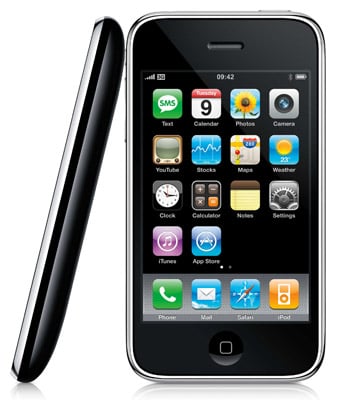What’s the Optimal Price Point for an iPhone App?
 One of the coolest aspects of owning an iPhone is the availability of applications – both free and paid – through iTunes. There is a wide range of prices for paid iPhone applications, from $0.99 for the Moron Test to $899.99 for iRA Pro, an application allowing users to view and control video surveillance equipment. And, of course, there are thousands of free applications available to iPhone users.
One of the coolest aspects of owning an iPhone is the availability of applications – both free and paid – through iTunes. There is a wide range of prices for paid iPhone applications, from $0.99 for the Moron Test to $899.99 for iRA Pro, an application allowing users to view and control video surveillance equipment. And, of course, there are thousands of free applications available to iPhone users.
So what’s the price point where iPhone users say, “Nah, that’s not worth it?”
A report on smartphone usage by online market research firm Compete states that $10 is the decision point for purchasing applications. According to Danielle Nohe, director of telecom and media-related research for Compete, “That [$10] seems to be the price-point up to which it’s a no-brainer. After that, it becomes a purchase decision” (source: http://www.mediapost.com/publications/?fa=Articles.showArticle&art_aid=103922).
But iPhone application statistics suggests that Nohe’s comment may be off the mark. According to an article by Dan Frommer in the Business Insider at the end of February (source: http://www.businessinsider.com/iphone-app-prices-tanking-2009-2), the average top 100 paid app sells for $2.55. These findings suggest that $10 may not be the cut-off point for most people; in fact, the point where purchasing an iPhone app becomes a real purchase decision may be significantly lower than $10. Notably, $10 (or $9.99) applications are not popular among users. Frommer’s article states that there are no $9.99 apps in the top 100 paid applications.
Furthermore, the idea of a $10 price-point barrier revolves around the value of the iPhone application to the user. Consumers make decisions on an app by app basis: For example, I may be willing to pay $9.99 for the “MLB.com at Bat” app to keep me updated on my favorite baseball teams, but would only be willing to pay $0.99 for an app like “Daily Horoscope.” The question of an iPhone app’s value to the expected target segment is something that iPhone app developers should consider in their design and marketing strategies.
The point is that while I would only be willing to pay $0.99 for “Daily horoscope” the target segment may be willing to pay up to $4.99 for this app – any price below that for this group is a “no-brainer,” as Nohe would say. The question for app developers becomes, “if I’m selling this app at $0.99 and getting 1,000 downloads a day, how many downloads a day could I be getting at a $2.99 price point?” If the answer is 900 downloads a day when priced at $2.99, then developers have been losing about $1,700 a day in potential revenue. This quickly turns into over $50,000 of lost revenue across only the first month of this app’s life.
And that is where a pre-launch discrete choice pricing study can be so valuable to app developers. Developers can experiment with their pricing in real time and look at actual sales volumes at different price levels to tweak their pricing until they “get it right,” but that strategy is risky. First, during the test phase (let’s say the first month that the app is on the market for sale) they could be losing thousands or even tens of thousands of dollars trying to get the pricing right. Second, they risk the chance of mispricing their app at the beginning of its life cycle; if they price it too high the initial buzz around the app could quickly die out and the app might never take off, and if they price it too low they could lose a substantial amount of money as seen in the example above. A $5,000 to $10,000 investment in a discrete choice app pricing study with Sentient would mitigate these major risks, to ensure that the developer comes to market at the right price point. The findings from this research would allow developers to determine the best pricing for each application to get the highest possible sales volume. The ROI on this kind of investment for the developer is potentially huge (surely, investing $10,000 to make an additional $51,000 in the first month is a wise decision), and perhaps, a true “no-brainer.”

Trackbacks/Pingbacks